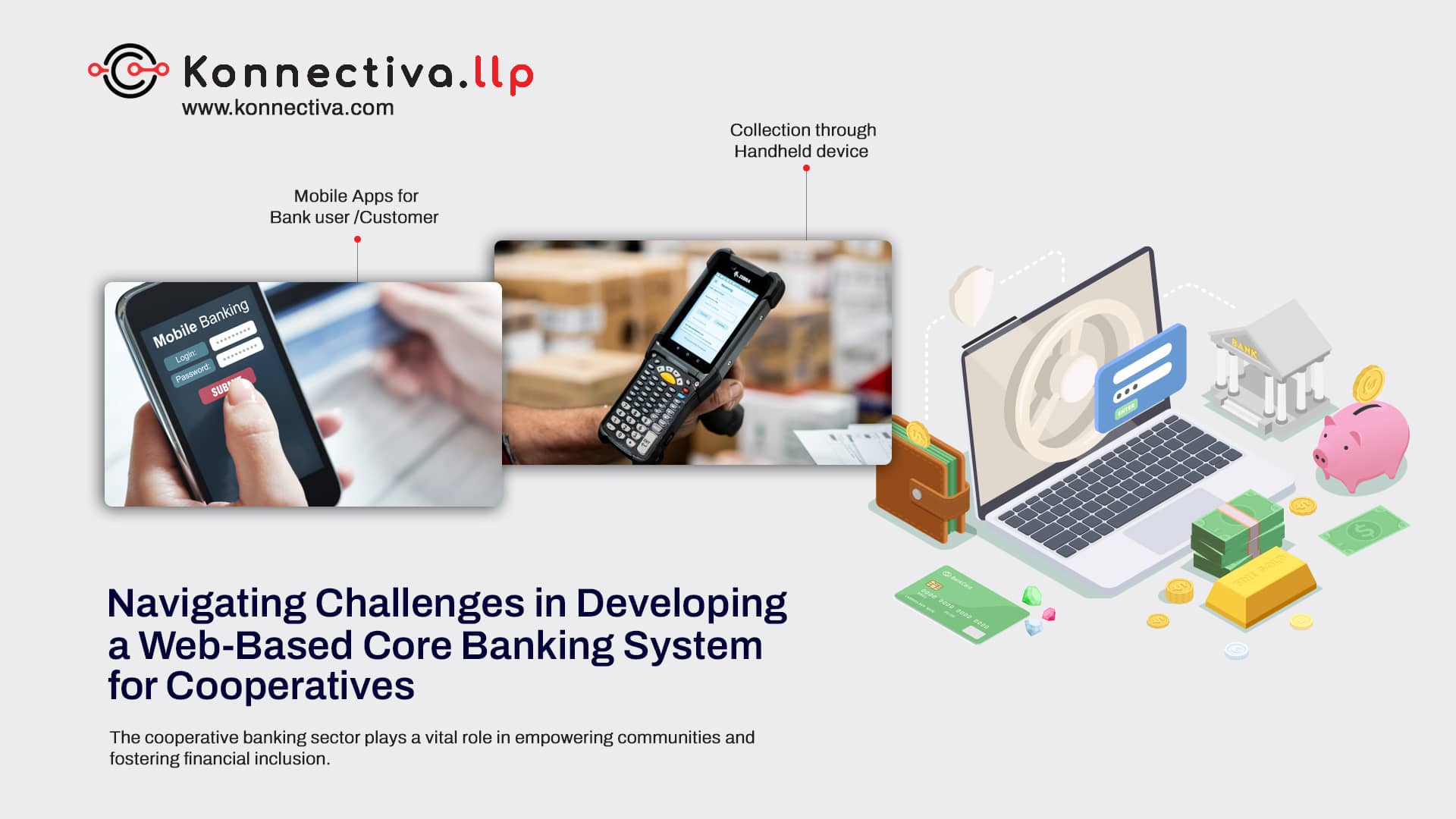
Project Description
Description:
Navigating Challenges in Developing a Web-Based Core Banking System for Cooperatives
Prepared By Konnectiva.LLC
…………………………………………………………………………………………………………………………………………………………………………………………………..
Introduction:
The cooperative banking sector plays a vital role in empowering communities and fostering financial inclusion. As the digital revolution continues to reshape the financial landscape, developing a web-based core banking system tailored to the unique needs of cooperatives presents its own set of challenges. In this article, we will explore ten major challenges faced in the development of such a system and provide insights into overcoming them.
1. Complexity of Cooperative Structures:
Cooperatives often operate with diverse membership structures, ranging from individual members to small businesses and community organizations. Designing a web-based core banking system that can accommodate the intricacies of these structures requires a thorough understanding of cooperative principles and their specific requirements.
Solution: Collaborate closely with cooperative experts and stakeholders to gain insights into their operational nuances. Conduct extensive research to identify the common challenges faced by cooperatives and incorporate the necessary functionalities into the core banking system.
2. Integration with Legacy Systems:
Many cooperatives already have existing legacy systems in place. Integrating a web-based core banking system with these legacy systems can be a complex task, as it requires seamless data migration, interoperability, and ensuring uninterrupted service during the transition phase.
Solution: Prioritize a phased approach to integration, starting with key modules or functionalities that can be easily migrated. Develop robust data conversion strategies and ensure compatibility between the new web-based system and the legacy infrastructure.
3. Scalability and Flexibility:
Cooperatives, especially successful ones, tend to grow rapidly. The core banking system should be scalable and flexible enough to accommodate expanding membership, increased transaction volumes, and additional services without compromising performance or user experience.
Solution: Implement a modular architecture that allows for easy scalability and adaptability. Leverage cloud-based technologies to ensure elasticity and cost-effective scalability as per the cooperative’s evolving needs.
4. Security and Data Privacy:
Cooperative banking systems handle sensitive financial information and transactions. Protecting member data, preventing fraud, and ensuring robust security measures are in place are paramount to building trust and maintaining regulatory compliance.
Solution: Implement stringent security protocols, including encryption, secure user authentication mechanisms, and regular security audits. Adhere to industry best practices and comply with relevant data protection regulations to safeguard member data.
5. Connectivity and Infrastructure:
Cooperatives can be located in remote or underdeveloped areas with limited internet connectivity. Developing a web-based core banking system that can operate seamlessly under varying network conditions and with low bandwidth poses a significant challenge.
Solution: Employ technologies such as progressive web applications (PWAs) that offer offline capabilities, allowing users to access essential features even in low or no network connectivity. Optimize the system for efficient data usage to minimize bandwidth requirements.
6. User-Friendly Interface:
Cooperative members may have varying levels of digital literacy and technological familiarity. Designing a user-friendly interface that simplifies complex financial processes and promotes self-service capabilities is essential to ensure smooth adoption and engagement.
Solution: Conduct user research and usability testing to gather feedback from cooperative members. Incorporate intuitive navigation, clear instructions, and contextual help to guide users through the system. Provide training and support resources to bridge the digital literacy gap.
7. Regulatory Compliance:
Cooperative banking is subject to various regulatory frameworks, including financial regulations, anti-money laundering (AML) policies, and know-your-customer (KYC) requirements. Ensuring compliance with these regulations throughout the development and deployment of the core banking system is crucial.
Solution: Collaborate with legal experts to understand the regulatory landscape and design the system with compliance in mind. Build robust auditing and reporting features to facilitate regulatory transparency and streamline compliance processes.
8. Interoperability and Integration:
Cooperatives often need to interact with external systems, such as payment gateways, credit bureaus, or government platforms. Developing interfaces and ensuring smooth interoperability with these systems is essential to facilitate seamless transactions and data exchange.
Solution: Employ open API standards and develop integration frameworks that enable smooth communication with external systems. Establish partnerships and collaborations with relevant stakeholders to ensure compatibility and interoperability.
9. Continuous System Updates and Maintenance:
Technology evolves rapidly, and the core banking system must keep pace with changing user expectations, emerging security threats, and regulatory updates. Maintaining a reliable and up-to-date system requires proactive monitoring, bug fixes, and regular feature enhancements.
Solution: Establish a dedicated team for system maintenance and support. Implement automated monitoring tools to detect issues and provide timely updates and patches. Continuously gather user feedback to prioritize and implement system improvements.
10. Training and Change Management:
Introducing a web-based core banking system represents a significant shift in the cooperative’s operations and workflows. Ensuring smooth adoption and managing change within the organization requires effective training programs, change management strategies, and stakeholder engagement.
Solution: Develop comprehensive training materials and conduct workshops to familiarize cooperative members with the new system. Engage with key stakeholders early in the development process, involve them in decision-making, and communicate the benefits of the web-based core banking system.
Conclusion:
Developing a web-based core banking system for cooperatives comes with its fair share of challenges. By understanding and addressing the complexities of cooperative structures, integrating with legacy systems, prioritizing scalability, ensuring security and compliance, enhancing user experience, and implementing effective change management strategies, these challenges can be overcome. With a robust and tailored core banking system in place, cooperatives can embrace digital transformation, streamline their operations, and better serve their members, ultimately contributing to the growth and prosperity of their communities.
